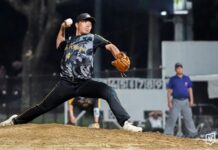THOMASIANS showed off their skills against students of top technological schools across Asia in the Shell Eco Marathon-Asia (SEM) 2014 held at Rizal Park, Manila from Feb. 6 to 9.
UST placed fifth in the gasoline prototype category with its vehicle “Tiger 400-Hybrid” (T400H), and set a record of 172.27 kilometers per liter (km/L), the longest mileage among other Philippine schools that participated this year.
The race was done in five series, where UST set a record of 123 km/L in the first run. But technical errors bogged down the UST team in the second to fourth runs. Its winning record of 172.27 km/L was set in the last run.
UST failed to beat its own record of 198 km/L, set when it first joined SEM in 2010 for the same category.
“Hindi man natin na-beat ‘yung 198 km/L [kasi] it’s a different track at karamihan bumaba ang record because of some changes, [at least] number one tayo sa Philippines,” said Rogelio Almira Jr., team manager, in an interview.
Mechanical Engineering Department Chair Nelson Pasamonte said UST’s performance was already an achievement considering the nature of this year’s track.
“Hindi natin pwedeng i-compare dahil iba ang race track dito, puro flat at minsan may hindi patag kaya [walang] freewheeling. Hindi gaya sa Malaysia na [may mga] summit [kaya pwedeng] mag-freewheeling in more than half of the way,” he explained.
The team was led by fifth-year Mechanical Engineering student Gabriel Martin Parami, and composed of Mechanical Engineering students Marion Francis Malachi Valenzuela, Jean Lharra De Guzman, Raphael Galvez, Juan Paolo Jose, Jerome Sta. Cruz, and Electronics Engineering student Marcelino Roberto Berba. Mechanical Engineering professor Raymundo Melegrito and Electrical Engineering professor Amante Gracia served as team advisers.
The SEM is an annual competition that promotes fuel efficiency, using vehicles designed to travel the longest distance with the least amount of energy possible.
Vehicles are classified into two categories: the urban-concept type similar to ordinary cars and prototypes in free design. They are further categorized into the kind of energy used: gasoline, diesel, alternative gasoline (ethanol 100), alternative diesel (Shell Gas-to-Liquid or fatty acid methyl ester), battery electric, and hydrogen fuel cell.
The competition was originally scheduled to be held at the Sepang International Circuit in Kuala Lumpur, Malaysia last July, but was cancelled due to problems in air quality and heavy haze caused by forest fires in neighboring Indonesia.
A total of 105 teams from 15 Asian countries joined the event, 15 of which came from the Philippines.
Aside from UST, the Mapua Institute of Technology, Don Bosco Technical College-Mandaluyong, Polytechnic University of the Philippines-Manila, De La Salle University-Manila, University of San Carlos-Cebu, and Technological Institute of the Philippines-Manila and Quezon City joined SEM.
This year’s longest distance recorded for the prototype category was 2,730.82 km/L, by students of Thailand’s Panjavidhya Technological College.
In 2012, De La Salle University’s “Proto” set a record of 255 km/L, the longest mileage recorded by a Philippine school.
Thailand also holds the longest mileage recorded in Asia which is 2,903 km/L, set by students of Dhurakij Pubdit University in 2012.
According to Pasamonte, UST joined SEM because it is a learning avenue for students where they can build a concrete output based on what they had learned.
“Malaking exposure [ito] for students, to [let them] interact and mingle with their fellow mechanical engineers, and to improve research in the department. In line din ito sa outcomes-based education.”
Tiger 400-Hybrid
It took only a month for students to prepare the University’s prototype car, since the body was the same one used in 2010. Its engine, however, was built from scratch.
The car was designed to be run alternately by an engine and a motor, called the “hybrid system,” for faster speed.
“[We used a] 50-cc engine [with a] generator producing electricity for the motor. [‘Yung] engine, malakas ang consumption sa fuel so nagkabit kami ng Electronic Fuel Injection to optimize the air fuel ratio,” Almira said.
The modification of “Tiger 400” that was used in 2011 to T400H was fully funded by the University. UST also paid for other expenses like the registration fee and hotel accommodation.
UST plans to join the SEM anew next year with entries in the two categories. The budget for the two new cars was already approved by the University.
“The initial plan is to come up with the urban-type [car to be] [run by] either electrical battery or ethanol. By summer, we will start fabricating the car,” Almira said. Lord Bien G. Lelay

















